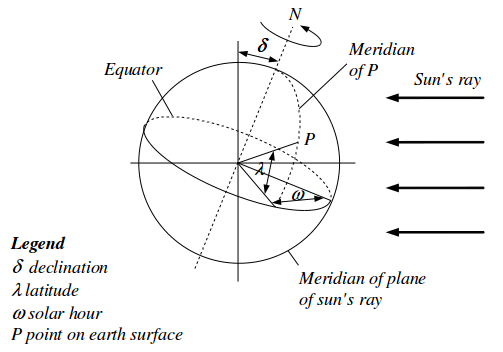Buildings.BoundaryConditions.UsersGuide
User's Guide
Information
This package contains models to read or compute boundary conditions, such as weather data, solar irradition and sky temperatures. The calculations follow the description in Wetter (2004), Appendix A.4.2.
Accessing weather data
The model
Buildings.BoundaryConditions.WeatherData.ReaderTMY3
can read TMY3 weather data for different locations.
The documentation of that model explains how to add
weather data for locations that are not distributed with the
Buildings library.
To access these weather data from the graphical model editor, proceed as follows:
-
Create an instance of Buildings.BoundaryConditions.WeatherData.ReaderTMY3.
-
Create an instance of Buildings.BoundaryConditions.WeatherData.Bus.
-
Draw a connection between these two instances.
-
Finally, to send weather data to an input connector of a model, connect the input connector of that model with the instance of Buildings.BoundaryConditions.WeatherData.Bus. Some models connect to the whole weather data bus, such as Buildings.BoundaryConditions.SolarGeometry.Examples.IncidenceAngle, in which case the connection will directly be drawn. Other models require only an individual signal from the weather data bus, such as Buildings.BoundaryConditions.SkyTemperature.Examples.BlackBody. In this situation, Modelica modeling environments typically show a window that allows you to select what data from this weather data bus you want to connect with your model.
Conventions for surface azimuth and tilt
To compute the solar irradiation, parameters such as the surface azimuth and the surface tilt are defined as shown in the following three figures.



For the surface azimuth and tilt, the enumerations Buildings.Types.Azimuth and Buildings.Types.Tilt can be used.
Note that a ceiling has a tilt of 0 , and also the solar collector models in Buildings.Fluid.SolarCollectors require a tilt of 0 if they are facing straight upwards. This is correct because the solar irradiation on a ceiling construction is on the other-side surface, which faces upwards toward the sky. Hence, a construction is considered a ceiling from the view point of a person standing inside a room.
References
-
Michael Wetter.
Simulation-based Building Energy Optimization.
Dissertation. University of California at Berkeley. 2004.
Extends from Modelica.Icons.Information (Icon for general information packages).
